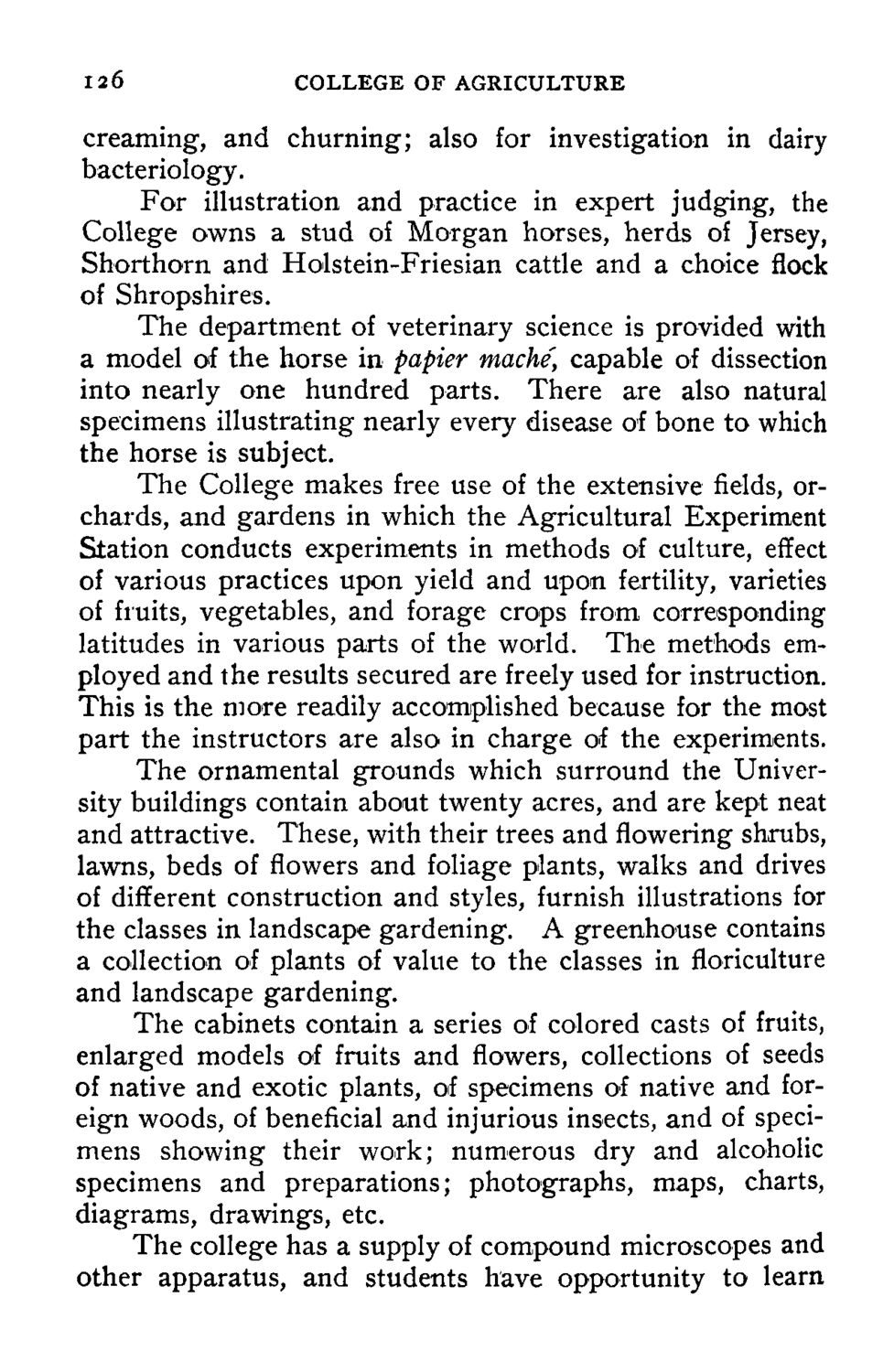| |
| |
Caption: Course Catalog - 1897-1898
This is a reduced-resolution page image for fast online browsing.

EXTRACTED TEXT FROM PAGE:
126 COLLEGE OF AGRICULTURE creaming, and churning; also for investigation in dairy bacteriology. For illustration and practice in expert judging, the College owns a stud of Morgan horses, herds of Jersey, Shorthorn and Holstein-Friesian cattle and a choice flock of Shropshires. The department of veterinary science is provided with a model of the horse in papier mache, capable of dissection into nearly one hundred parts. There are also natural specimens illustrating nearly every disease of bone to which the horse is subject. The College makes free use of the extensive fields, orchards, and gardens in which the Agricultural Experiment Station conducts experiments in methods of culture, effect of various practices upon yield and upon fertility, varieties of fruits, vegetables, and forage crops from corresponding latitudes in various parts of the world. The methods employed and the results secured are freely used for instruction. This is the more readily accomplished because for the most part the instructors are also in charge of the experiments. The ornamental grounds which surround the University buildings contain about twenty acres, and are kept neat and attractive. These, with their trees andfloweringshrubs, lawns, beds of flowers and foliage plants, walks and drives of different construction and styles, furnish illustrations for the classes in landscape gardening. A greenhouse contains a collection of plants of value to the classes in floriculture and landscape gardening. The cabinets contain a series of colored casts of fruits, enlarged models of fruits and flowers, collections of seeds of native and exotic plants, of specimens of native and foreign woods, of beneficial and injurious insects, and of specimens showing their work; numerous dry and alcoholic specimens and preparations; photographs, maps, charts, diagrams, drawings, etc. The college has a supply of compound microscopes and other apparatus, and students have opportunity to learn
| |